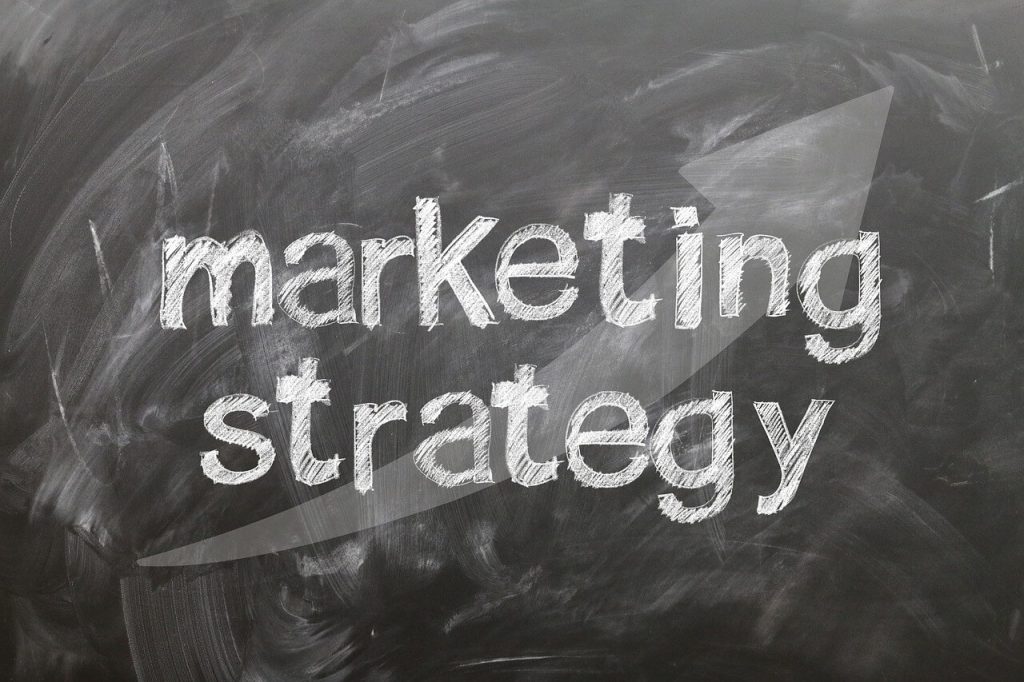Your Guide to Understanding How Digital Marketing Works
What is Digital Marketing?
Marketing is a familiar business foundation: commercials, billboards, pamphlets, and store displays promote products, services, discounts, and promotions. Without these things, businesses wouldn’t be able to communicate with customers—let alone introduce them to great products.
Digital marketing pursues the same goals—helping customers find the right products in the most convenient ways possible. The digital world is pretty complex, however, and it spans numerous e-commerce websites, social media websites, search engine result pages, and more.

Today’s marketing strategies engage each of these areas with new tools—each of which has been fine-tuned to meet their environment’s needs.
In definition, digital marketing is the online promotion and selling of products and services. It also involves leveraging marketing tactics with the digital world. Whereas a physical mall might feature product displays, a social media website might feature digital advertisements.
Digital Marketing Channels
Because there are many types of websites, marketers need to identify each type’s unique method. These methods are called ‘channels,’ and assisting customers across different channels is called ‘cross-channel marketing.’
As an example of cross-channel marketing, let’s consider Facebook advertising. A customer sees an advertisement for a product they like. They find the brand’s Facebook page to learn more about this product. Once they’ve decided to purchase it, they might find a Google Maps link on the very same page. If they head to the brand’s real-world store, they’re ‘crossing the channel,’ so to speak, from online to offline shopping. The two are seamlessly integrated.
Let’s say that this brand also features QR code displays within their physical store. In this situation, scanning a QR code gives the customer special discounts when using the brand’s online store. If the customer uses their computer, smartphone, or tablet to visit the online store, they’ve ‘crossed the channel’ yet again.
Because most people have smartphones, and even more have computers, cross-channel marketing is nearly inseparable from digital marketing. The occupation involves quite a few strategies—and each strategy requires more than a few skill sets to be effective. In many cases, a business requires the assistance of a digital marketing agency. These agencies are cross-channel specialists, and they’re well-versed in the art of cross-channel outreach.
How Does Digital Marketing Work?
What are these strategies, anyway? Before we dive into them, we should understand the environments they’re used in. Remember: The goal of every marketing campaign is to develop a relationship with customers. The digital marketing best practices are those that benefit these customers in some way, shape, or form.
As such, the key to any digital marketing strategy is to know where one’s customers are—and then go there. To connect with these customers, a digital marketer needs to know what they want and when they want it. They also need to know when to communicate with them—as customers visit different online spaces at different times. Because of their versatility, digital marketers frequently work alongside a business’s other decision-makers. Even a digital marketing entry-level salary can be lucrative—as ground-floor engagement specialists are often indispensable.

By using a variety of digital channels, a marketer can reach customers in a few ways. Let’s say, for example, that a brand promotes itself with a digital advertisement on Google. As customers search for products this brand happens to sell, they’ll probably see this ad. If they’re interested in what the ad offers, they might search for the business on Facebook to see its reviews.
This process is made possible because digital marketers have created optimized, intuitive strategies—strategies that study their shoppers’ behaviors. If the first situation occurs—wherein a brand’s Facebook followers arrive at a brick-and-mortar store—a business can even use offline marketing strategies to bring a campaign full circle. The result is a self-sustaining marketing machine capable of reaching even the toughest of audiences.
This requires, of course, a deep understanding of the actual tools and methods that drive these strategies. While these tools are sophisticated in design, they’ve been refined for ease of use. Between paid search toolkits, paid ads, a Google algorithm, website design tools, app creation kits, and more, digital marketers have many available resources.
Core Digital Marketing Strategies
Even though the digital world changes often, some approaches to digital marketing are very adaptable. When putting all the pieces together, marketers end up with efficient, flexible, and easy-to-operate campaigns. Building a cohesive campaign from scratch might seem difficult, but these cornerstones of digital marketing complement one another. By learning more about these strategies, one can easily integrate them tactic by tactic.

Search Engine Optimization
The first major component of digital marketing is SEO—or search engine optimization. This is the strategy of ranking high within search engine listings. It’s also the process of optimizing one’s online content to get there.
SEO revolves around keywords. Specifically, it revolves around keywords that are relevant to the specific wants and needs of customers. SEO can be used in many areas, including a brand’s website, posted news articles, product descriptions, and even location listings.
However, the real trick to effective SEO is the use of keywords that reflect a customer’s hobbies, daily behavior, ideas, and other interests. If a customer searches for a guide to bake cookies, for example, a brand that includes ‘cookie mix’ within their SEO keyword list will be highly visible.
Digital marketers need to implement SEO strategies in several areas. Because each of these areas is quite different, a good digital marketing education is imperative. While a digital marketing degree is ideal, merely learning how to use digital marketing tools is a significant step towards building a full-fledged SEO campaign.
The main areas where SEO should be used are:
- Website pages
- External links
- Social media content
- Listed product descriptions
- Emails
Each of these areas has subgroups, of course. Listed product descriptions, if they’re going to appear in mobile searches, could also be used in branded apps. Cross-channel factors are also considered, which is why many marketers categorize SEO as either ‘on-page SEO’ or ‘off-page SEO.’
Search Engine Marketing
Search engine marketing and SEO go hand-in-hand. To boil it down: SEO is the technical side, and search engine marketing is the strategic side. To succeed in search marketing, a digital marketer needs both. To create link assets, a business needs an SEO content specialist. If Google has trouble listing these assets, a business needs an SEO technician.
It’s important to remember that SEO, much like the Internet surrounding it, changes continuously. Hundreds of thousands of websites constantly compete for a number-one spot in search engines, so they’re always trying to implement the best keywords—and in the most efficient way.

Google’s algorithm is far from static, as it’s based on artificial intelligence. As its artificial intelligence learns more by the day, entire rulesets within the algorithm can change direction. The search engine marketer’s job is to learn these directional changes—and even learn to predict them. As a digital marketing expert, the experienced search engine marketer is ever-adaptable.
Many believe that search-based marketing has evolved more than all other marketing disciplines. Shoppers conduct searches from smartphones these days, so having a “mobile-first” mindset is imperative. Streamlining an SEO strategy’s ‘structural’ side is also important. Once an SEO technician implements data analytics to determine an effective keyword set, a search engine marketer must focus on content layouts.
Even though SEO is highly technical, as well as systematic, it can’t be exploited. There isn’t an ‘easy button’ for SEO strategy, as Google has been optimized to prefer truly organic content—or content that is as human as possible.
Content Marketing
Even though search engine marketing is the less technical counterpart to SEO optimization, content marketing is more organic than both. Content marketing focuses on ideating, creating, and distributing valuable, relevant, and engaging ideas to customers.
Content itself tends to exist in the form of text. This said, the term includes other vehicles of expression—like online videos, slideshows, and recordings. The goal of every content marketer is to attract and retain an audience that is clearly defined. By communicating ideas effectively and in an inspiring way, they not only answer the needs of customers but also discover new ones.
Because content is the vehicle of expression, it’s also the vehicle of other digital marketing strategies. Search engines reward businesses that feature consistent, high-quality content. Likewise, content encompasses advertisements—persisting across many channels to reach customers. Content is integral to inbound traffic strategies as well, generating leads for future strategy.
Naturally, content marketing is more effective in large audiences. When it comes to large audiences, another core marketing approach immediately comes into play.

Social Media Marketing
Social media might be a part of everyday life, but its underlying nature is incredibly complex. Year after year, a slew of digital marketing classes attempt to tackle its many elements. Even still, few things short of experience with digital marketing jobs can keep up the pace.
Social media marketing is the practice of connecting with audiences on social media platforms. It involves publishing great content, engaging followers, listening to customers, and analyzing the results. The significant engagement platforms are Facebook, Instagram, Twitter, YouTube, and LinkedIn. This said it isn’t rare to see social media experts engaging their fans on adjacent messaging apps—such as Facebook Messenger and Snapchat.
Social media platforms have a surprising number of technical resources that marketers can use. Facebook, for instance, offers sponsored ad support. LinkedIn, meanwhile, is an excellent platform for B2B connections, affiliate marketing, and local search research. Even though social media platforms prioritize entertainment and ease of access, they’re among the best avenues for data analytics. Businesses focused on audience outreach can use targeted social media ads to carefully examine reaction statistics, clickthrough, subsequent purchases, and more.
Conversion Rate Optimization
The Internet is an environment defined by page visits. Newsletter signups, e-cart checkouts, and YouTube page subscribers determine the content users see regularly. Because of this, conversion rate optimization, or CRO, is a statistic that directly reflects a business’s ‘presence in the online world.
CRO is a percentage of website visitors who complete a predefined, measured action. This action tends to be called a ‘conversion,’ as it usually involves signup, a purchase, or a web form completion. At first glance, the statistic seems simple to calculate: Divide the number of conversions by overall visitors—multiplying the result by 100—to get a percentage.
The complexity of CRO, however, exists in the sheer number of factors that influence these conversions. A well-designed, well-formatted website’s appeal might boost conversions, but determining a connected social media site’s cross-channel impact must also be considered.
This is where the ‘optimization’ part of CRO comes into play. It’s possible to analyze and identify the elements which drive conversions the most.
It’s also possible to create strategies that maximize their impact. By reducing lead expenses, a CRO specialist can make their campaign even more effective.
CRO needs tend to be form-fitting, as every business is different. Even though raw data can offer baseline interpretations, and even if surrounding factors are measured, not every conversion carries the same ‘weight’ or impact. While the average customer’s purchase might result in another purchase, later on, a purchase from a YouTube influencer might result in an online review.
These ‘weight relevancies’ are considered often, and they’re even useful as strategic resources. In some cases, growing connections can be valuable investments. In other instances, simply connecting with notable influencers can have an immediate impact—as we’ll see below.

Affiliate Marketing
Sometimes, a digital marketing specialist needn’t be an employee to assist a business. Affiliate marketing is a major boon to businesses, serving as the connective glue for ongoing strategies—exponentiating visibility across many channels.
It’s the promotion of another seller’s products and services—often on a commission basis. If your business finds a product it likes, promotes it, and succeeds in representing it, it can become affiliated with it. This works the other way around, too. If another company, entrepreneur, or other notable online entity successfully represents your product, both parties become more visible.
By and large, affiliate marketing is about spreading product creation among different parties. In some cases, an affiliated party can even be known as a publisher. In other cases, they can be major drivers of conversion—filling communication gaps that would otherwise disconnect a brand from new followers. Even though most affiliates have had some form of digital marketing training, many become highly successful from experience alone.
The latter case is made possible due to the influence of social media. While not every business considers social media to be part of affiliate marketing, others consider it an important intermediary. It’s possible to run an affiliate program based on potential lead numbers instead of direct revenue. As such, some affiliates conduct work through affiliate networks—and each network assists the projects via a complex database, hosting many product promotions to choose from.
Pay-Per-Click Advertising
As we can see, product and service visibility can be worth more than sales. This doesn’t mean, however, that both can’t be combined into an effective strategy. Pay-per-click advertising, also called PPC, is precisely this. It’s a foundational internet marketing strategy of incremental ad purchases. More so, it’s the strategy of paying a fee every time an online viewer clicks a digital advertisement.
PPC tends to take form in search engine advertising: A search engine allows different advertisers to bid on ad placement via sponsored links. Because there’s only so much room for these advertisements, businesses must be highly competitive in their keyword bidding. Google Ads is the most popular PPC advertising platform, giving marketers not only direct search engine ad space—but also ad space on its other properties, such as YouTube.
While businesses pay a lot for these ad spaces, it isn’t without reason. A single click can result in a conversion—and a quality advertisement placement can result in massive clickthrough rates. More often than not, pay-per-click campaigns employ a business’s every marketing team—as the results of a PPC campaign, when analyzed, offer great insights into every strategy.

Email Marketing
As one of the oldest digital marketing cornerstones, email marketing continues to be a fundamental topic of every digital marketing course. Beyond the classroom, it’s continuously explored due to its widespread adoption, authentic connections, and cross-channel opportunities.
It’s the process of targeting customers via email. Conversions are its main goal, often achieved in newsletter signups, redeemed digital offers, in-store purchases, and membership plans. There are many ways to use email marketing, and each method benefits from the communication form’s one-on-one aspect.
Depending on the industry, email can be a business’s primary marketing platform. Approximately half of the real estate companies, for example, obtain subscribers through email. Because many email services feature high-quality listing services, this avenue of marketing is also one of the best for customer segmentation. Successful emails tend to be relevant emails, as a majority of emails remain unopened due to the nature of their titles.
Unique to email marketing is its potential as a scheduled marketing campaign. Many digital marketers prioritize timeframes for social media lead generation, but numerous factors can skew following analysis. On the other hand, emails exist within their ecosystem—wherein they’re less impacted by the Internet’s many search listings, status posts, backlinks, and product advertisements.
Much like the other digital marketing cornerstones, email outreach results can be measured. Once they are, the results tend to be incredibly useful content marketing resources. Simultaneously, any advertisements contained within an email message provide valuable engagement data for offline marketers.

Why Digital Marketing is Important
Digital marketing is an integral part of any successful business strategy. It exists to establish an authoritative online presence, both in direct communication and indirect lead generation. An effective digital marketing team steers a business through the online world, directing it to customers it needs the most. Every year, more industry competitors engage online consumers—quickly becoming long-lasting providers for large audiences.
From SEO to paid advertisements, and from email newsletters to social media campaigns, every digital marketing action results in consumer reactions. A majority of shopper reviews only exist online—and the same majority consider these avenues to be the sole place for communication.
Corporations with highly optimized websites, highly efficient marketers, and a powerful message to spread surpass many others. When even a single click can result in exponential leads, every incremental effort counts. Today’s businesses are continually growing, both online and online—and the future for connected professionals is brighter than ever.
We’ve come a long way from age-old homepages and uncategorized online ads—and the best is yet to come.

